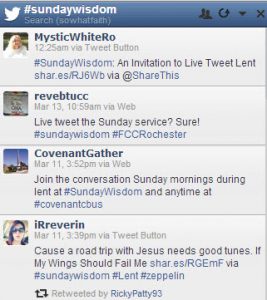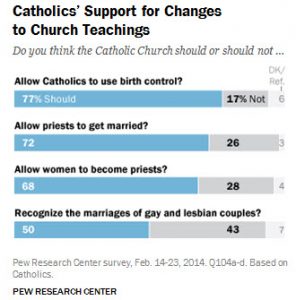I am here to offer a belated birthday wish to our dear friend the internet on the occasion of its 25th birthday, which was celebrated earlier this month. While computing was a part of my early education experiences, going online came later. My initial online endeavors were an exercise in curiosity and an attempt to be a part of the leading edge. Somehow in just a few decades I traveled from a world in which the internet was interesting but had no real purpose to a reality in which Read More …
Trends
Divorce & Cohabitation (#1361)
New research released by the Council on Contemporary Families suggests that most people have misunderstood the role cohabitation plays in the divorce rate because they have been asking the wrong questions of the data. Rather than comparing those who cohabit before marriage to those who do not, researchers should be considering whether or not cohabitation is actually a significant factor in the longevity of a marital relationship. Initial findings suggest that "the age Read More …
Drive-Through Prayer (#1360)
After last week's piece about a drive-in church, the idea of drive-through prayer doesn't seem strange at all. Estero United Methodist Church, a church near where I live, is providing drive-through prayer every Wednesday evening from 5:00 p.m. to 6:30 p.m through April. Since they are located on a busy road, discipleship director John Halley considers it to be "one way to put ourselves out there and to give folks the opportunity to come by and receive the blessing of Read More …
Successful People (#1359)
Eric Barker, the founder of the Barking Up The Wrong Tree blog, recently shared what he believes the world's most successful people have in common. He suggests that we can become like them if we: Stay Busy Just Say No Know What You Are Build Networks Create Good Luck Have Grit Make Awesome Mistakes Find Mentors. So What? I love this list! I would not argue that a single item should be removed. I do, however, think that some organizations (including Read More …
#SundayWisdom (#1357)
The CANA Initiative (Convening, Advocating, Networking, Acting) is a collective of faith-engaged people and entities (Roman Catholic, Evangelical, Mainline Protestant, Orthodox, and other Christians who believe the future for Christian life and mission will be different in many ways from the past and present), that brings together diverse and innovative leaders to collaborate in the development of new ways of being Christian. During Lent, Diana Butler Bass – a CANA initiator Read More …
The Francis Effect (#1355)
Pope Francis has been incredibly popular, especially for considering the radical shift he represets. Despite high favorability ratings, early research from the Pew Research Center suggests there isn't strong evidence for a "Francis effect" that is leading to changes in how American Catholics approach their religion. More specifically: There has been no measurable rise in the percentage of Americans who identify as Catholic. Nor has there been a statistically significant Read More …
Ministry in 2014 (#1354)
Todd Rhoades, a prolific blogger on matters of faith, recently reminded his readers of the importance of churches doing ministry in the present using 2014 friendly approaches. Not only is Rhoades troubled by congregations that behave more like what one would expect in 1984, 1994, or 2004, he also believes many congregations that have moved beyond those years but are not quite up to date are nuts: If you’re using the same communication methods, technology, music, delivery style, and format Read More …
The Retirement Boom (#1353)
Casey N. Cep recently wrote about the importance of listening to the elderly. She notes that those age 65 and better are a significant part of the American population now, and that they will grow significantly over the next few decades: OLDER AMERICANS ARE ONE of the fastest growing demographics in our country: Baby Boomers began turning 65 in 2011, and by 2030 older Americans will number 72 million, nearly 20 percent of the total population. In a culture so obsessed with youth, Read More …
Drive-In Church (#1351)
After encountering several stories last week of walk up and drive through ashes for Ash Wednesday, it seems appropriate to start this week with the story of a new kind of church: the drive-in church. Over the past few days several people sent me a link to Amy Kiley's piece on Daytona Beach Drive In Christian Church (Daytona Beach, FL), which holds worship services in an old drive-in theater. From the comfort of their vehicles parishioners listen to worship on their radios. Read More …
Congregational Age (#1349)
While I was well aware the United Church of Christ includes many historic congregations that were founded long before the denomination itself was created in 1957, I was surprised to learn that nearly 7 out of every 10 current congregations were organized before 1900 (69.1%). Even more alarming is the fact that only around 1 in 10 were organized during the last 32 years (9.6%). So What? Congregational age matters. While a denomination can benefit from congregations with Read More …









